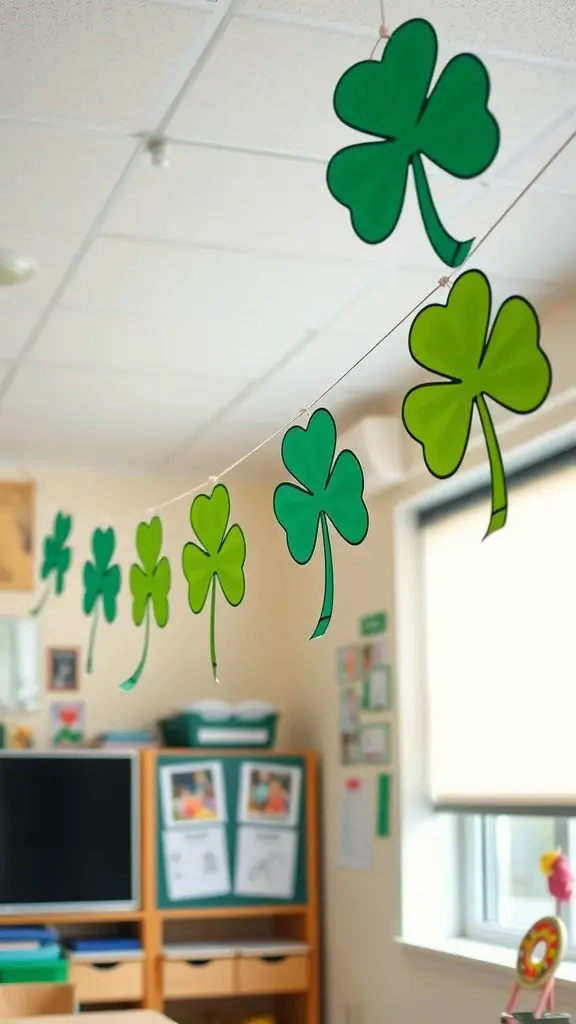Art can be both accessible and rewarding, especially when you explore easy watercolor techniques that yield stunning results. Whether you’re a beginner or looking to refine your skills, these methods will empower you to unleash your creativity. By incorporating basic tips and a few simple tools, you’ll discover how to produce beautiful, expressive pieces that showcase your unique style. Dive into the world of watercolor, and let your imagination flow as you bring your artistic visions to life.
Understanding Watercolor Materials
Your journey into the world of watercolor art begins with understanding materials. Selecting the right supplies is necessary to achieving stunning results. Watercolor paints, paper, and brushes all play significant roles in your artistic expression. By familiarizing yourself with these materials, you’ll set a solid foundation for your creative endeavors.
Types of Watercolor Paints
Your choice of watercolor paints can significantly impact your artwork. There are mainly two types of watercolor paints: tube and pan. The former offers vibrant colors straight from the tube, while the latter is compact and perfect for quick mixing.
- Tube Paints – Vibrant, easy to mix, and ideal for wet techniques.
- Pan Paints – Convenient, portable, and perfect for travel.
- Gouache – Opaque and vibrant, ideal for layering and mixed media.
- Liquid Watercolor – Highly pigmented, great for pouring and dribbling.
- Water-Soluble Crayons – Versatile and fun, ideal for exploring textures.
Any type you choose can lead to unique effects; it’s all about your artistic preference.
Choosing the Right Brushes
Types of brushes you select can enhance your watercolor painting experience. Various sizes and shapes cater to different techniques, influencing brushstroke and detail.
Brushes play a significant role in achieving desired effects in watercolor art. Some common types include round, flat, and fan brushes. Each type offers unique strengths: round brushes are great for detail, flat brushes excel in bold strokes, and fan brushes create textures. Ensure to choose high-quality synthetic or natural hair brushes, as they hold water effectively and help you control paint flow. The right brush can elevate your artwork, allowing you to experiment with different styles and techniques comfortably.
Essential Techniques for Beginners
It’s crucial to understand a few foundational techniques to start your watercolor journey effectively. Each technique offers unique opportunities for expression and will significantly enhance your artistic skills. As you experiment, you’ll discover how different methods can create stunning effects, allowing you to express your creativity freely and confidently.
Wet-on-Wet Technique
After wetting your paper with clean water, apply wet paint directly onto the damp surface. This technique allows colors to blend seamlessly, creating soft edges and beautiful gradients. It’s ideal for achieving background washes or dreamy landscapes, giving your work an ethereal quality that captivates viewers.
Dry Brush Technique
Behind the beauty of watercolor lies the dry brush technique, where you use a brush loaded with minimal paint to create texture. This method produces a distinct and striking appearance, as it allows for intricate details in your artwork, enhancing the overall presentation.
In fact, the dry brush technique can be highly effective for adding texture and depth to your art pieces. You’ll find it invaluable for capturing the fine details in subjects like fur, grass, or tree bark. To achieve the best results, make sure your brush is almost dry and use quick, short strokes; this results in a more defined look that stands out on the page. It’s a powerful technique that can elevate your watercolor projects by adding realistic elements that draw the viewer’s eye.
Color Mixing and Palette Preparation
Some artists overlook the importance of color mixing and palette preparation, yet these are vital steps for achieving stunning watercolor art. By understanding how to blend colors effectively and set up your palette thoughtfully, you can create beautiful gradients and harmonies that elevate your artwork. Experimenting with color combinations will not only enhance your skills but will also empower you to express your unique artistic voice.
Basic Color Theory
Below are the foundational concepts of color theory that will aid you in mixing colors accurately. You’ll want to familiarize yourself with primary, secondary, and tertiary colors, as well as complementary and analogous color schemes. Understanding how colors interact and affect each other allows you to create rich and balanced compositions in your watercolor art.
Creating a Color Wheel
Palette preparation begins with creating a color wheel, which provides a visual guide to understanding color relationships.
Another effective method for exploring color mixing is to create your own color wheel. This hands-on approach not only defines the primary, secondary, and tertiary colors but also helps you identify complementary pairs and explore color harmony. By mixing paints directly on your wheel, you’ll gain a deeper understanding of how different shades interact and how to achieve specific results. With this practical tool, your watercolor palette will become both a map and a resource, empowering you to make informed choices about your colors.
Mastering Brushwork
Once again, your brushwork is fundamental to achieving stunning watercolor results. Focus on how you hold your brush and the pressure you apply, as these subtle changes can lead to diverse textures and effects. Practicing varied strokes and experimenting with different brushes will enhance your unique style, allowing you to create eye-catching pieces with ease.
Strokes and Marks
Among the many brush techniques, mastering strokes and marks will elevate your watercolor art. Trying out different strokes—such as flicks, washes, and dabs—will help you discover the richness of expression in your work. Utilizing a combination of these will add dimension and vibrancy, making your paintings truly come alive.
Layering Techniques
By incorporating layering techniques into your process, you will enhance the depth and complexity of your watercolor artworks. This approach allows you to build vibrant colors while keeping the transparency that characterizes watercolor.
At its core, layering involves applying multiple transparent washes of color, allowing each layer to dry before adding the next. This method can create rich gradients and subtle textures, enhancing the visual interest of your piece. Start with light washes and gradually add darker hues for depth, while ensuring that you maintain your brushwork for seamless transitions. By embracing layering, you give your work a more dynamic and polished appearance that captivates your audience.
Adding Depth and Texture
Now that you’ve mastered the basics of watercolor, adding depth and texture can elevate your artwork to extraordinary levels. By experimenting with various techniques, you not only enrich the visual appeal of your pieces but also bring a unique character that engages the viewer. Techniques like using salt or other mixed media can add fascinating dimensions and enhance the overall composition of your watercolor paintings.
Using Salt and Alcohol
One of the most intriguing methods for creating texture in your watercolor art is by utilizing salt and alcohol. When you sprinkle salt onto wet paint, it absorbs the water and leaves behind beautiful, unique patterns as it dries. Similarly, applying rubbing alcohol can create stunning effects by repelling the pigments, leading to intriguing shapes that draw the eye in.
Incorporating Mixed Media
Against the traditional boundaries of watercolor, exploring mixed media opens up a world of possibilities for your artwork. By integrating materials like pen, charcoal, or collage elements into your pieces, you can create stunning contrasts and enrich the narrative of your art.
And as you investigate into mixed media, you can experiment with layering various materials to achieve a striking balance between different textures and finishes. Combining watercolor with acrylics, pastels, or even fabric can yield visually captivating results, making your palette more dynamic. This technique not only pushes the limits of your creativity but also enables you to forge a personal style that stands out. Play around with different combinations, and don’t hesitate to embrace the unexpected, as this can lead to some of your most exciting discoveries in art!
Tips for Composition and Design
For stunning watercolor art, effective composition and design are necessary. Consider the following tips to enhance your pieces:
- Utilize negative space to create balance.
- Vary the sizes and shapes of your elements.
- Incorporate a limited color palette for harmony.
- Experiment with different orientations.
Thou will find that these strategies can elevate your creations!
Rule of Thirds
About the Rule of Thirds, it is a fundamental guideline used in visual arts. By dividing your canvas into a 3×3 grid, you can position your points of interest along these lines or at their intersections. This technique leads to a more dynamic and visually appealing artwork, breaking the monotony of central placement.
Focal Points and Balance
Composition is not just about arranging elements; it’s about creating focal points and achieving balance. A well-placed focal point can guide the viewer’s eye and enhance the overall impact of your painting. It’s necessary to balance your composition, so no single area overwhelms the rest.
In fact, choosing a primary focal point allows you to control the viewer’s attention, making your artwork more engaging. When you balance your focal points, you create a sense of harmony throughout your piece. Ensure your elements work together, where every detail supports your dominant theme. Utilize varied shapes and colors to draw attention, and place secondary elements strategically to guide the eye without distraction. A carefully considered balance will make your work stand out, enhancing its visual appeal.
Final Words
Presently, you have all the tools you need to explore easy watercolor art techniques that can lead to stunning results. By experimenting with different methods and materials, you can develop your unique style and enhance your skills. Keep practicing and be open to new ideas, as each brushstroke is an opportunity to express your creativity. Embrace the process, and don’t hesitate to share your artwork with others, as your journey will inspire fellow artists.
Q: What are some beginner-friendly watercolor techniques to achieve stunning art results?
A: Beginners can explore several techniques to enhance their watercolor art. Some effective methods include wet-on-wet, where you apply wet paint onto wet paper for soft blends; wet-on-dry, which involves painting on dry paper for sharper edges; and layering, allowing previous layers to dry before adding new ones for depth. Other techniques like salt texturing and using a sponge can create interesting effects. Experimenting with these methods will lead to beautiful, unique results.
Q: How can I best prepare my workspace for watercolor painting?
A: Setting up your workspace is vital for creating stunning watercolor art. Ensure you have a clean, flat surface with good lighting. Gather your materials including high-quality watercolor paints, brushes of varying sizes, watercolor paper, a palette, and plenty of water. It’s also helpful to keep paper towels handy for blotting and mixing colors. Organizing your tools efficiently will allow you to focus on creating art without distractions.
Q: What type of paper is suitable for watercolor painting?
A: Selecting the right paper is necessary for watercolor techniques. Watercolor paper comes in various weights and textures, but artists typically choose either cold-pressed (noted for its textured surface) or hot-pressed (smooth surface) paper. A heavier weight, around 200 lb or 300 lb, is ideal as it can handle more water without warping. Experimenting with different types can also help you find the ideal fit for your artistic style.
Q: Are there particular brushes that work best for watercolor techniques?
A: Yes, different brushes serve various purposes in watercolor painting. A round brush is versatile for both fine details and broad strokes, while a flat brush is great for washes and large areas. A mop brush holds a lot of water and is ideal for creating soft textures. Additionally, a fan brush can add texture and foliage effects. Investing in a few quality brushes can enhance your painting experience and results.
Q: Can I mix different brands of watercolor paints?
A: Absolutely, you can mix different brands of watercolor paints to achieve a wider range of colors and effects. However, it’s recommended to test a small amount first, as the properties might vary between brands. Some paints may have differing pigment concentrations and binders, which can influence the final appearance of your artwork. Mixing and experimenting will help you discover beautiful combinations that suit your style.





